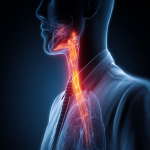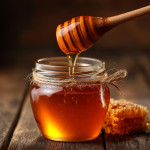Understanding Ineffective Esophageal Motility (IEM): More Than Just a Manometry Finding Join us as we delve into the world of Ineffective Esophageal Motility (IEM), a common esophageal motility disorder that can present challenges for both patients and clinicians. Defined primarily by High-Resolution Manometry (HRM), IEM occurs when ≥50% ineffective peristaltic sequences (distal contractile integral [DCI] < 450 mm Hg cm s) are observed alongside normal lower esophageal sphincter (LES) relaxation (integrated relaxation pressure [IRP] < upper limit of normal). Did you know that IEM is detected in as many as 30% of patients undergoing HRM, and can even be found in up to 17% of asymptomatic individuals? While some people with IEM experience no distinct symptoms, others may struggle with issues like difficulty swallowing (dysphagia), chest pain, heartburn, or regurgitation. These symptoms can sometimes overlap with other conditions like GERD, making diagnosis and management complex. We’ll explore the factors influencing esophageal bolus transit, including preload, afterload, and intrinsic muscle contractility, and how problems with these mechanisms can contribute to impaired emptying. While IEM itself is a specific manometric finding, it can be associated with broader esophageal dysmotility, which may stem from primary esophageal issues like achalasia or eosinophilic esophagitis, or secondary conditions such as connective tissue disorders (like scleroderma), neurological disorders, or even structural problems. Our discussion will cover the critical role of HRM in diagnosing IEM, explaining how it differentiates between weak (DCI 100–450) and failed (DCI < 100) sequences. We’ll highlight the importance of provocative maneuvers like Multiple Rapid Swallows (MRS) and the Rapid Drink Challenge, which help assess contraction reserve and potential EGJ obstruction, guiding prognosis and treatment decisions, especially regarding anti-reflux surgery. Currently, there is no definitive pharmacotherapy to specifically improve esophageal contractility in IEM. Treatment strategies largely focus on managing associated symptoms like dysphagia and heartburn, and aggressively addressing concurrent conditions like GERD, which is often seen with more severe IEM (>70% ineffective sequences). Lifestyle and dietary modifications may also play a role. Finally, we’ll touch on the exciting recent advancements and future directions in understanding and treating IEM. This includes the refinement of diagnostic criteria, exploration of underlying pathophysiology (like vagal neuropathy or the esophageal microbiome), and the development of novel diagnostic tools such as the Functional Lumen Imaging Probe (FLIP). We’ll also look ahead to potential new therapeutic avenues, including promising research into serotonergic agents and the ongoing search for targeted prokinetic agents. Tune in to gain a deeper understanding of IEM, its diagnosis through HRM, and the evolving landscape of its management and future treatments.








